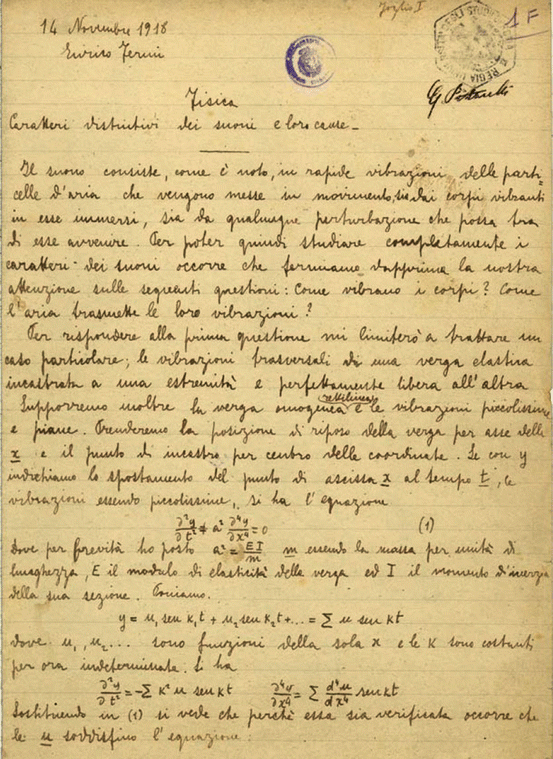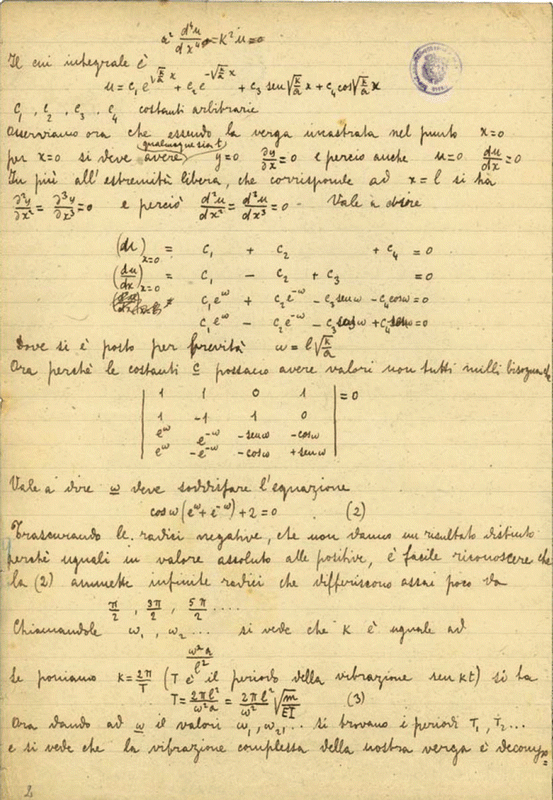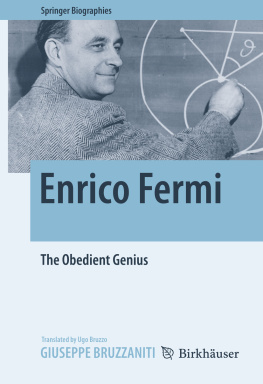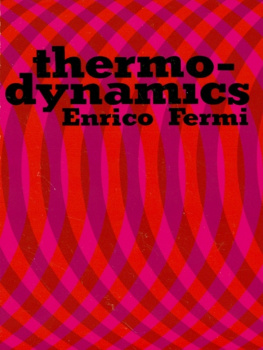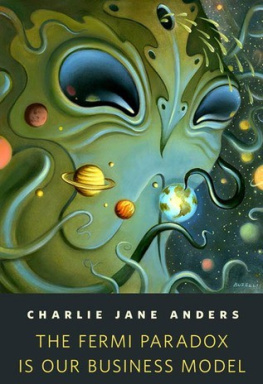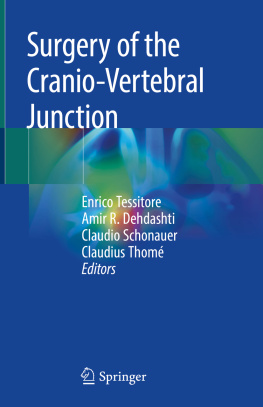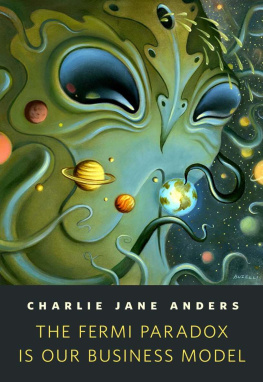1. The last Galilean
Galileos investigation of nature, based on a deep interplay between sensible experiences and certain proofs, has been a foundational passage in the history of modern science. The empirical and the rational aspects of the scientific investigation correspond to two different figures of researchers: the experimentalist and the theorist. Enrico Fermi belonged to the last generation of scientists in which the two attitudes could coexist. Nowadays, the higher mathematics needed in theoretical research and the more and more sophisticated instrumentation used in experiments require an extreme specialization and cannot be mastered by the same person.
In this chapter we go through the main events of Fermis life, trying to reconstruct his human profile and profound intellect, abstract and concrete at the same time.
1.1 Elementorum physicae mathematicae
Alberto Fermi, a railway clerk, and Ida de Gattis, a primary school teacher, were 44 and 30 years old, respectively, when, 3 years after their marriage, Enrico Fermi was born. He was the third and last of their offspring; Maria was born in 1899, and Giulio in 1900. There was a deep tie between Enrico, a reserved boy of few words, and Giulio, extroverted and loving. They shared from their childhood inclinations and readings that already foretold the future prevailing interests in the scientists life. Enrico and Giulio built an electric pile, some toys, and some small electrical engines; at age 10 as told by Emilio Segr, his friend and collaborator Enrico tried to understand the meaning of the sentence the equation

represents a circle.
Also young Enricos readings reveal his interests and what he later chose to study. Elementorum physicae mathematicae is the title of a treatise on mathematical physics, written in Latin in 1840 by the Jesuit Andrea Caraffa. Fermi bought it when he was about 14 years old from a second-hand bookstall in Campo de Fiori in Rome, a place he liked to haunt, and studied it carefully, as testified by the many annotations in the margins of the book.
In 1915, Enrico Fermis life was deeply affected by the loss of his brother Giulio, who died after the anesthesia for a trivial operation to remove a throat abscess. Enricos mother, as reported by his wife Laura,
It was evident already from his early teenage years that Fermi had strong scientific interests, and these were further enhanced by his acquaintance with Adolfo Amidei, at 14, Ernesto Cesaros Corso di analisi algebrica con introduzione al calcolo infinitesimale [A course on algebraic analysis with an introduction to infinitesimal calculus] and Luigi Bianchis notes for his courses on analytic geometry at the University of Pisa; at 15, Dinis Lezioni di calcolo infinitesimale e integrale [Lectures on infinitesimal and integral calculus] (again, notes for a course at the University of Pisa); at 16, Simon D. Poissons Trait de mcanique [A treatise on mechanics], and at 17, Hermann Grassmanns geometric calculus, preceded by Giuseppe Peanos operations for deductive logic.
But these books that Amidei gave to Fermi were not enough. From a postcard he sent to Persico on 7 September 1917, we learn that to prepare his admission exam to the Scuola Normale di Pisa (following Amideis suggestion), Fermi also studied Chwolsons physics treatise and other books.
Young Enrico, however, had more extended interests than just theoretical studies. He shared with Persico his enthusiasm and dedication to mathematics and physics; when he was between 14 and 17 years old they performed several experiments. They measured the value of the gravitational acceleration and of the terrestrial magnetic field in Rome, and the density of the water from Acqua Marcia.
On entering his 18th year of life, Fermi was a true prodigy; he had a deep mathematical and physical education, great experimental skills, and most of all, a huge fascination for knowledge.
1.2 No mans land and the international milieu
Distinctive features of sound and its causes was the title of the dissertation Enrico Fermi was required to write to gain admission to Pisas Scuola Normale (Figs.
Fig. 1.1
First page of Fermis written exam to enter Scuola Normale Superiore
Fig. 1.2
Second page of Fermis written exam to enter Scuola Normale Superiore
Enrico Fermi gained his admission to Scuola Normale, and in the fall of 1918 he enrolled at the University of Pisa. At first he chose Mathematics, but shortly afterwards he switched to Physics.
The years he spent in Pisa were very important for Fermi. He started a long and strong friendship with Franco Rasetti, another physics student. During those years, he received many accolades, not only for his skills, but also for the enthusiasm and dedication he showed in deepening his (already remarkable) training in mathematics and physics. From his correspondence with Persico and from his notes, meticulously written in a small booklet that was found in Chicago, we know that in those years he read several treatises: Poincars Thorie des tourbillons and Leons de mcanique celeste, Appells Trait de mcanique rationnelle, Plancks Vorlesungen ber Thermodynamik, and Richardsons Electron Theory of Matter. He also studied but it is impossible to ascertain the sources Hamilton-Jacobi theory, Boltzmanns H theorem, Plancks black body radiation theory, and relativity theory. The booklet contains also a large collection of data about radioactive substances, taken from Rutherfords Radioactive Substances and their Radiations and two large reference lists from a book by Townsend on the electrical properties of gases. The last notes in the booklet, which has 102 pages in total, are dated 29 September 1919. All this shows the extent of Fermis scientific education when he was just 18 years old. The tight interplay between theoretical and experimental work that will become the trademark of Fermis approach to research clearly emerged during those years in Pisa: on one hand, he was the most authoritative member of the Physics Institute for what concerns relativity theory and the quanta, while on the other hand, together with Rasetti and Nello Carrara, another fellow student at Scuola Normale, he did experimental work on X-rays, and designed and built discharge tubes that were better suited to that purpose. They worked in the laboratory of the Physics Institute, made available to the three students by the director Luigi Puccianti, who recognized Fermis extraordinary talent and often asked him to explain the new theories that were emerging during those years.
As Fermi writes to Persico, In the physics department I am slowly becoming the most influential authority. In fact, one of these days I shall hold (in the presence of several magnates) a lecture on quantum theory, of which Im always a great propagandist.
Fermis scientific production started with relativity theory. In 1921, one year before he graduated, the journal Nuovo Cimento published two papers on some relativistic issues,
On the experimental side, he was busy with research on X-rays: the X-ray diffraction by curved crystals and the production of images with that method was the topic chosen by Fermi for his thesis. For Fermi, theoretical research and experimental work were not two unrelated skills or activities, as exemplified by what he wrote to Persico in 1920: I have almost abandoned the idea to write my thesis on the photoelectric effect in gases. I might instead study the interesting phenomena concerning the diffraction of X-rays by crystals, also because I hope to relate them with statistical physics; I believe indeed that the properties of Rntgen rays should be markedly different from what is predicted by the usual wave theory.
 represents a circle.
represents a circle.